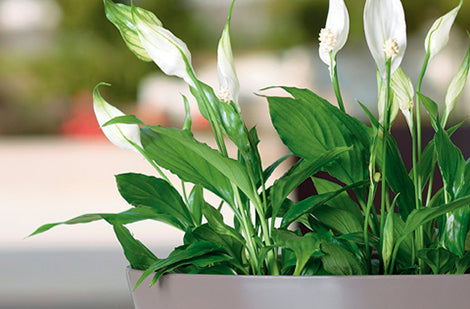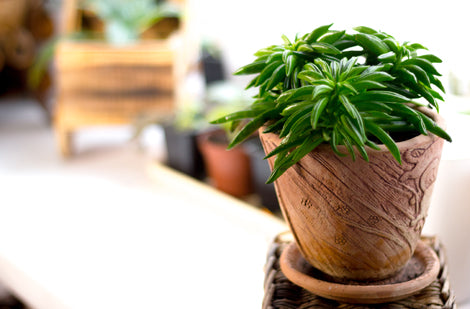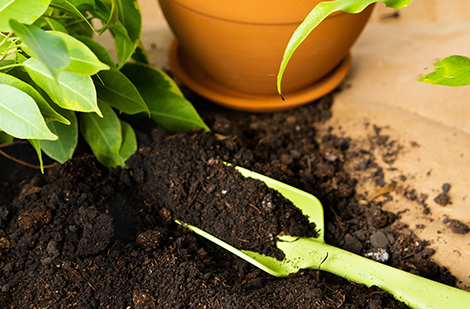Gymnocalycium Mihanovichii f. Variegata
Gymnocalycium Mihanovichii f. Variegata
Gymnocalycium Mihanovichii f. Variegata
Exposure
- Bright brightness with direct sunlight
Rusticity
Bloom time
- April, May
- Bloom in spring
- Bright variegated colours
- Unique and compact cactus
- Requires a lot of light
- Requires little watering
The Gymnocalycium Mihanovichii f. Variegata, commonly known as Variegated Moon Cactus, is a fascinating cactus variety highly valued for its unique colourations and attractive shape. Each specimen is a true palette of colours, featuring a swirling array of pinks, purples, yellows, greens, and reds that intertwine to create a striking visual spectacle. Its globular or slightly flattened shape and compact size make it an ideal choice for indoor cactus collections, adding a vibrant and exotic touch to any space.
Key Features
- Shape: Globular or slightly flattened cactus, without prominent spines, displaying a compact structure.
- Colour: Highly variable and unique variegation for each specimen, with swirling shades of green, yellow, orange, pink, purple, and red on its body.
- Growth: Relatively slow, forming a compact and stable structure over time.
- Care: Easy, typical for cacti, requiring infrequent watering and plenty of light.
- Flowering: Produces charming funnel-shaped flowers, usually white or pale pink, which emerge near the top of the cactus body. These flowers open during the day and close at night, offering delicate beauty.
Care Tips
- Light: Requires plenty of light to thrive and for its variegated colours to be most vibrant. Bright, direct sunlight is ideal. In winter, place it on a sunny windowsill or under a grow light.
- Watering: Water moderately during the growing season (spring and summer). Allow the substrate to dry out completely between waterings to prevent root rot. Water very little or not at all in winter.
- Soil: A very well-draining soil mix is essential. Use a potting mix specially formulated for cacti and succulents, amended with 70% to 80% mineral grit such as coarse sand, pumice, or perlite. The pot must have drainage holes.
- Humidity: Has no particular humidity requirements, tolerates dry indoor air.
- Temperature: Prefers warm to moderate temperatures. Will not survive a hard frost; it must be brought indoors if there is a risk of freezing temperatures.
Plant details
Dimensions
Dimensions
Characteristics
Characteristics
Habit:
- Upright
Flowering colours:
- Yellowish-green
Plant needs
Plant needs
Watering:
- Wait until the soil is dry between waterings
Maintenance:
- Easy
Soil requirement:
- Thrives in a well-drained substrate, such as a mixture of potting soil and pumice.
Features
Features
Resistance:
- Drought
Attract:
Use:
- Decor
- Office
Attribute:
- Colourful



Related articles
-

Potting House Plants: which pot to choose
Read the articleBien qu'une plante puisse passer plusieurs mois et parfois même plusieurs années dans le même pot, avec le temps ses racines envahissent tout l'espace disponible. Il devient important de choisir...
-

Moving Up a Level: Advanced Guide to Repotting ...
Read the articlePropagate your violets! Discover the simple cutting method, the secret to the perfect soil mix, and how to fight mealybugs.
-

The Complete Guide to Buying and Caring for Ind...
Read the articleBringing a touch of nature to your home with plants is a great idea! Not only do they beautify your living space, but they also help purify the air. However,...
-

Build Your Own Terrarium: The Complete, Easy Gu...
Read the articleThe terrarium is the perfect addition to your decor! Learn how to easily create your own miniature garden with our complete guide.
-

Create a garden with succulents
Read the articleLes plantes grasses n’ont pas leur pareil pour créer des arrangements à la fois impressionnants par leurs couleurs, leurs formes et leurs textures et faciles à entretenir. Qu’on les agence...
-

Houseplants to discover - Butterfly Palm or Are...
Read the articleDypsis lutescens, anciennement Chrysalidocarpus lutescens
-

Calathea: The Essential Guide to Mastering the ...
Read the articleCalathea is a stunning addition, but it's demanding! The key to its success? Humidity. Find out why tap water and dry air are its worst enemies and how to give...
-

Jade Plant (Crassula): The Easy-Care Succulent ...
Read the articleThe jade plant is a must-have! Learn all the secrets to caring for this resilient succulent that naturally grows into an elegant miniature tree.
-

Madagascar Dragon Tree: Embrace Effortless, Gra...
Read the articleAdd a modern touch to your home! The Madagascar Dragon Tree is low-maintenance, perfect for beginners, and stands out with its slender look and two-toned foliage.
-

Aspidistra: The "Cast Iron Plant" Indestructibl...
Read the articleDon't have a green thumb? The Cast Iron Plant is for you! Tolerant of shade and missed waterings, it's perfect for lobbies and offices. Learn how to maintain its leathery...
-

Embrace the Fern: The Champion of Shade and Tro...
Read the articleGot a dark corner? Ferns are your allies! They are easy to care for if you master one factor: humidity. Learn how to water them perfectly for spectacular and full...
-

-

Kalanchoe: The Secret to Massive Blooms That La...
Read the articleNeed lasting colour? The Kalanchoe blooms profusely for over two months! An easy succulent that tolerates neglect and adds a vibrant touch to your home.
-

Snake Plant: The Unkillable Houseplant, Perfect...
Read the articleThe Snake Plant is an ideal houseplant for everyone, whether you're a beginner or an experienced gardener. Its resilience, ease of maintenance, and decorative appearance make it an essential choice...
-

Edible Flowers: Top 5 for Garden and Kitchen
Read the articleOffrant une belle gamme de couleurs, de formes et de textures, les fleurs comestibles enthousiasment les amoureux de jardinage et de cuisine.
-

Tropical Flowering Plants: A touch of the exoti...
Read the articleLes plantes tropicales à fleurs ont tout pour faire tourner les têtes! Colorées, odorantes, généreuses, elles n’ont pas leur pareil pour égayer une aide de repos, un balcon, une terrasse....
-

Keep a palm tree on the terrace - why not!
Read the articleDifficile de résister à l’appel des tropiques quand le soleil et les températures clémentes se pointent le bout du nez. Rien de mieux qu’un palmier sur la terrasse ou le...
-

Bring Your Plants Indoors for Winter: The Compl...
Read the articleDon't get caught by the first frost! Prepare your outdoor plants for winter with our complete guide.
-

When and how to repot house plants
Read the articleAlthough a plant can spend several months and sometimes even several years in the same pot, over time its roots invade all the available space.
-

How to select the best houseplant potting soil
Read the articleIl est important d'adapter le substrat utilisé au type de plante. Plusieurs mélanges sont possibles à partir de terre brune, de mousse de tourbe, de perlite ou de vermiculite. Pour...




























